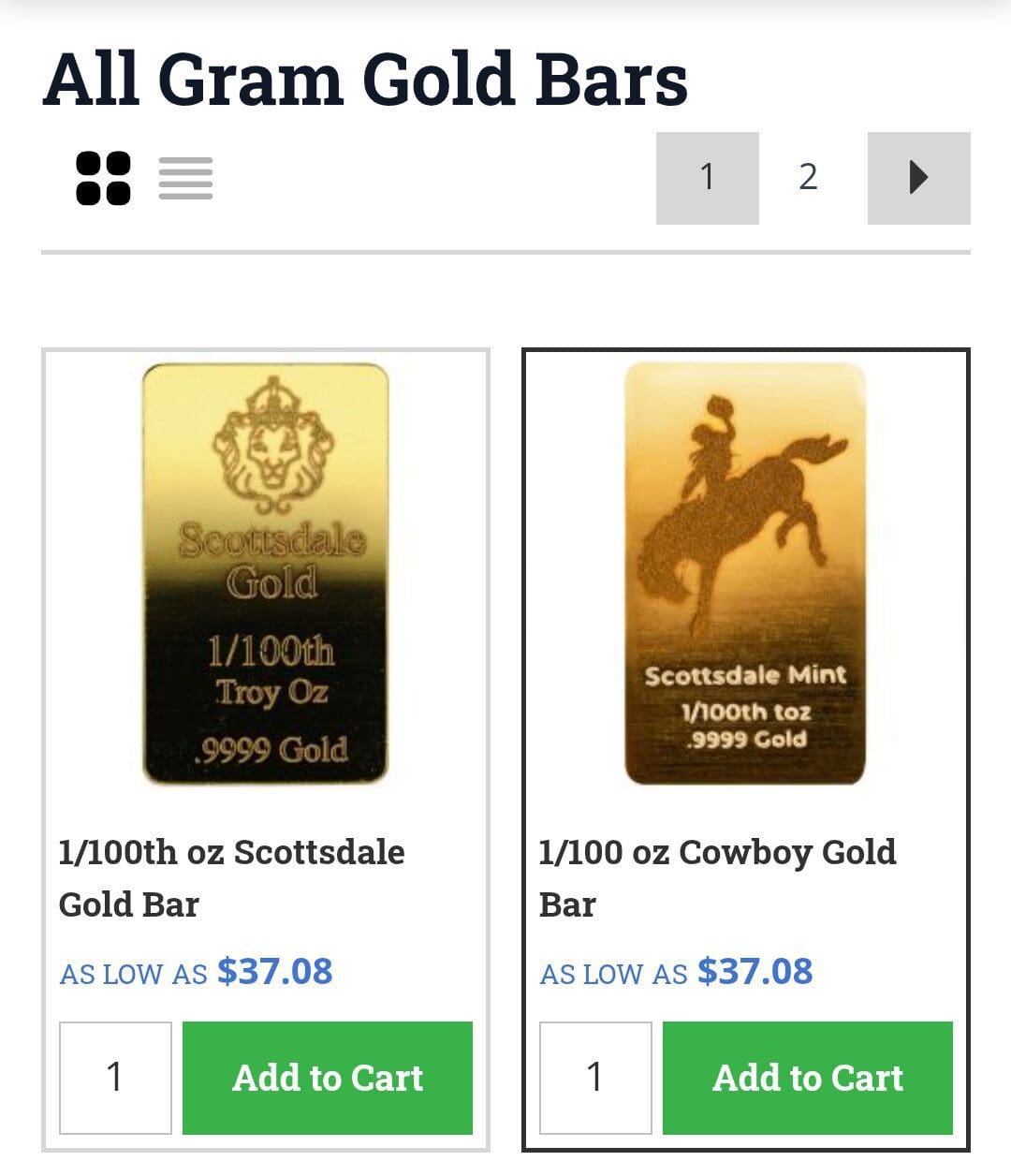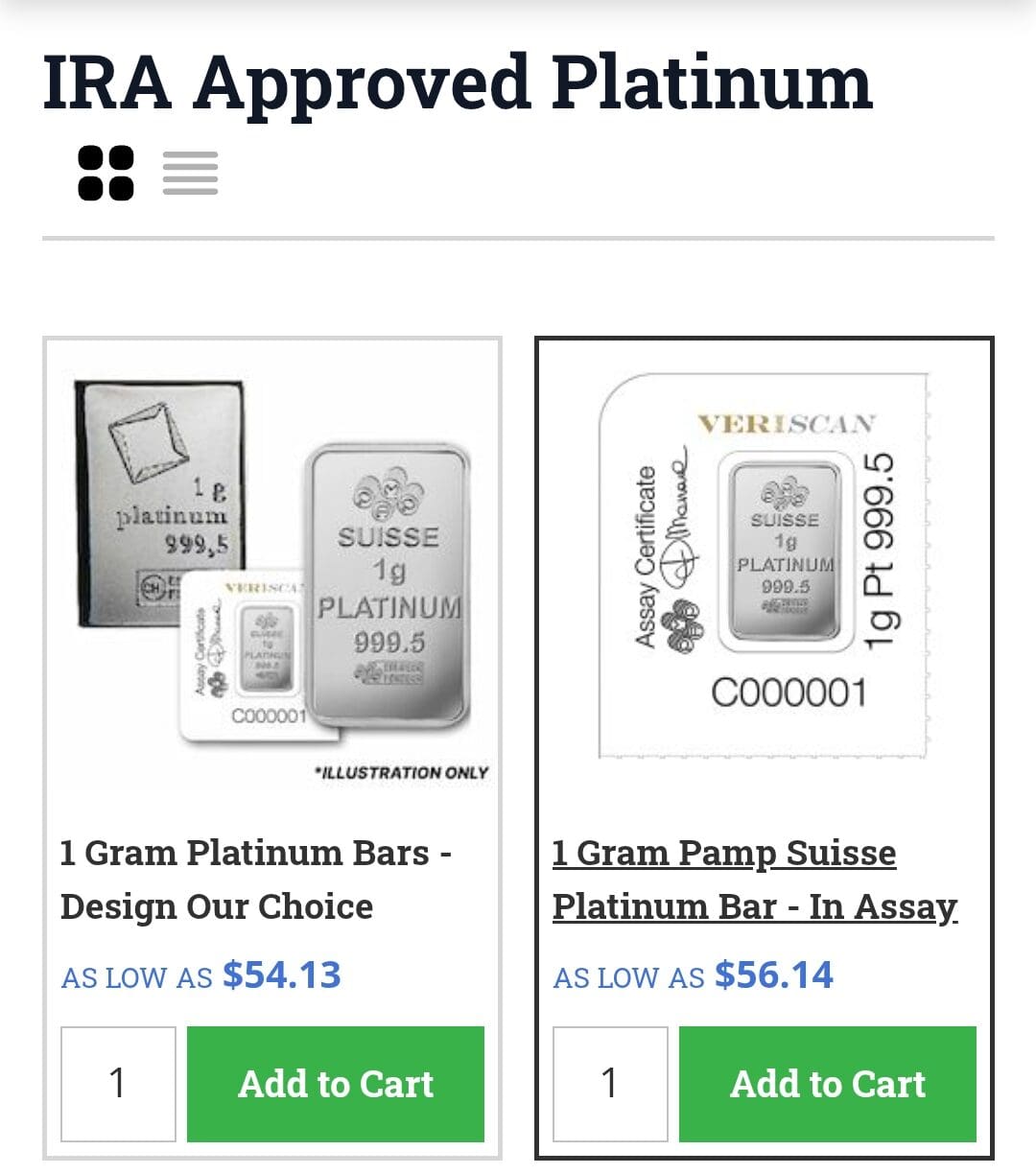SD Bullion | APMEX | |
Min. Investment | $0 | $0 |
Established | 2012 | 2000 |
Storage Fees | 0.29% – 0.39%
Starts at $9.99. 0.29% annual fee for gold amd platinum products, 0.39% for silver | About 0.55%
Annually, estimated – can be vary between accounts |
Coin & Bar Selection | Strong bullion focus, IRA-approved metals, fractional sizes | Broad selection, includes rare coins, collectibles, pre-1933 gold
|
Payment Methods | Cards, PayPal, Wire, eCheck, Crypto | Cards, PayPal, Wire, eCheck, Crypto |
Pricing Transparency | Real-time spot price updates | Real-time spot price updates |
Best For | Affordable bullion, strong reviews, IRA simplicity | Collectors, rare coins, and premium features |
Our Rating |
(4.3/5) |
(4.1/5) |
Read Review | Read Review |
SD Bullion vs. APMEX: Which Has Better Reviews?
SD Bullion clearly outperforms APMEX in terms of customer satisfaction across major review platforms.
Platform | Rating |
|---|---|
Trustpilot
| 4.3 (2,648 reviews) |
Better Business Bureau (BBB) | A+ | Accredited Since 2014 |
Sitejabber | 3.3 (641 reviews) |
While both companies hold A+ BBB ratings, SD Bullion earns a 4.3 Trustpilot score versus APMEX’s low 1.7. On Consumer Affairs, APMEX lags with 2.8.
Platform | Rating |
|---|---|
Trustpilot
| 1.7 (7,966 reviews) |
Better Business Bureau (BBB) | A+ | Accredited Since 2004 |
Consumer Affairs | 2.8 (290 reviews) |
This discrepancy highlights SD Bullion’s consistent service and reliability, whereas APMEX’s reputation suffers due to complaints around order processing, delays, and customer support.
Buying Bullion: SD Bullion or APMEX?
When it comes to buying gold and silver directly, both SD Bullion and APMEX offer wide-ranging product lines — including coins, bars, and rounds from leading mints.
APMEX stands out with its massive inventory, including pre-1933 gold, junk silver, and a broad selection of collectibles.
On the other hand, SD Bullion focuses more on investment-grade bullion, offering IRA-approved products in various sizes, including fractional options.
In terms of payment flexibility, SD Bullion clearly leads. Buyers can choose from credit/debit cards, PayPal, e-check, bank wire, and even Bitcoin — many of which qualify for a 4% discount.

APMEX also accepts these methods, but imposes a 4% fee on card and crypto transactions, which can reduce cost-efficiency.
Shipping policies are similar — both offer free shipping on orders over $199 and insure all deliveries. However, SD Bullion’s spot price locking system is a standout feature, securing your price at checkout even if your payment clears days later.
APMEX offers faster shipping through its QuickShip® program, but SD Bullion offers better pricing consistency.
Both dealers include robust buyback programs, but SD Bullion’s minimums are lower, making it more accessible for smaller investors. APMEX’s $1,000 minimum for selling back metals may be a barrier for beginners.

While APMEX has great extras like its Bullion Card and AutoInvest, these are more valuable for frequent or advanced buyers.
For everyday investors, SD Bullion provides the better balance of pricing, accessibility, and product range.
Comparing Gold IRA Services: SD Bullion or APMEX?
Overall, both companies are strong in IRA offerings, but SD Bullion’s simplified onboarding, strong support, and investor-friendly terms give it a narrow but meaningful advantage.
Both APMEX and SD Bullion make it easy to set up a precious metals IRA, partnering with reputable custodians and offering a wide range of IRS-approved gold, silver, platinum, and palladium products.
APMEX works with Equity Institutional, Strata Trust, and others; SD Bullion also partners with New Direction Trust and Kingdom Trust.

In terms of product availability, both platforms support a diverse set of IRA-eligible metals — from gold bars to coins like the American Gold Eagle or Canadian Maple Leaf.
However, SD Bullion’s IRA setup process feels a bit more streamlined, with dedicated guidance and multiple funding options, including rollovers from existing 401(k)s and IRAs.
When it comes to storage, APMEX stores IRA metals through Citadel, operated by Brink’s, while SD Bullion uses its own SD Depository — a fully insured, non-bank storage facility.

SD Bullion also gives new customers three months of free storage, making it more attractive to first-time IRA investors.
Fee structures are where SD Bullion has a slight disadvantage. While both platforms require you to contact them directly for full IRA fee details, APMEX lists its storage fee (about 0.55% annually) more transparently.
Summary: SD Bullion vs APMEX
In this comparison, SD Bullion outperforms APMEX in key areas.
It earns higher ratings from customers, offers better value for physical purchases, and delivers a smoother experience for IRA investors. APMEX brings strong features and product variety, but its lower reviews and higher payment fees hold it back.
Overall, SD Bullion is our top pick for most gold and silver investors.
FAQ
Yes, both SD Bullion and APMEX are well-established with secure websites, insured shipping, and strong reputations in the precious metals market.
SD Bullion is generally more beginner-friendly with straightforward pricing and a simple checkout process, making it ideal for newcomers.
Not all purchases are reported. Reporting depends on the type and size of the transaction, and both companies comply with federal regulations.
While both accept crypto, APMEX supports more digital currencies via BitPay, offering better integration for crypto investors.
Only APMEX offers this through its AutoInvest feature, which lets users schedule regular gold, silver, or platinum buys.
Yes, but cancellations come with penalties. SD Bullion charges a restocking and market loss fee; APMEX charges a flat cancellation fee plus market loss.
